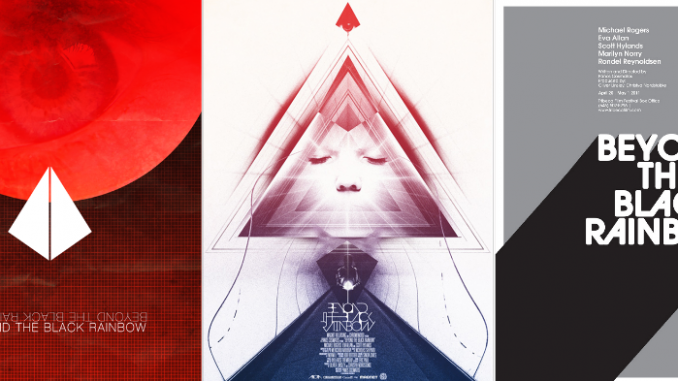
Director: Panos Cosmatos
Writer: Panos Cosmatos
Actors: Eva Bourne, Michael Rogers, Scott Hylands
Festivals: 2010 Whistler Film Festival, 2011 Tribeca Film Festival, 2011 Fantasia Film Festival
Rohan Roberts | 12 July 2014
If Stanley Kubric and David Lynch got together, dropped some acid, and decided to make a film, then Beyond the Black Rainbow would be that film. If you liked the silent hypnotic sequences of 2001: A Space Odyssey, if you enjoyed the enigmatic two-cast acting in Solyaris, if you empathised with the psychedelic tropes of Into the Void, and if you believe that part of Film appreciation involves a certain degree of effort and participation by the viewer, then this film will not disappoint.
Beyond the Black Rainbow is a sci-fi, quasi-futuristic thriller about a New Age therapeutic organisation called The Arboria Institute that believes in “Serenity through Technology”. A young girl, Elena, with telekinetic abilities is held against her will under the sinister gaze of Dr Barry Nyle.
There’s not much more to the plot. However, what make this film eminently watchable are the haunting visuals, the sinister music, the experimental plot progression, and the symbolic journey into the dark recesses of the human psyche.
The movie may be viewed as an allegory of state control and power. The film is set in 1983. The significance of that will not be lost on the literate reader. Director Cosmatos stated that he was interested in social control mechanisms, our own personal, internal controls and how religion affects our consciousness and society. He explores these philosophical ideas in the film and much of the thematic concerns of the film revolve around issues of repression and control of emotions.
The rigid geometric world of Arboria is symbolic of the autocratic state. The outside world with its trees and grass symbolise the freedom from subjugation that Elena craves. The triangle of light responsible for dampening Elena’s telekinetic abilities would obviously represent all those elements that the State has at its disposal for keeping its populace docile and manageable: including control of media, censorship, eavesdropping, hacking, and propaganda.
Another dominant theme is the role of self-identity. The film is nothing if not trippy. Dr Barry Nye’s psychedelic descent into the black pool may be compared to a spiralling out of control during a bad LSD trip and the subsequent damage it can cause to the individual’s perception of reality. As one reviewer has pointed out, “Barry Nyle is ultimately a pathetic character: his far-reaching knowledge, restrained demeanour and carefully controlled work environment are unable to dominate the forces of irrationality and chaos burning in his mind. In the end, the doctor undergoes a physical and psychological transformation where he forfeits all control and gives in to madness.” The film presents a dark and frightening contrast to the happy-clappy, airy-fairy, hippy flower child psychedelic world of the 60s.
All in all this is an incredibly brave endeavour—it takes cojones of steel to make a movie that many may find is not their cup of crazy. However, if you have the time and the patience, this haunting, surreal movie can be incredibly rewarding and will leave an indelible mark on your consciousness.